Lying on a locker room table inside the bowels of Jack Murphy Stadium, BYU’s team doctors offer junior quarterback Robbie Bosco a couple of suggestions — “do you want a shot or some pain medication?”
Bosco pondered his options while at the same time wondered how in the world this was happening to him, and of all nights, this night?
The No. 1-ranked Cougars had come to San Diego to face Michigan in the 1984 Holiday Bowl. Hanging in the balance was an unbeaten season and shot at the national championship. Bosco’s problem was he couldn’t get his balance after taking a hit early in the game.
“I throw a pass to (Glen) Kozlowski to the left side and a guy rolls up on my leg,” Bosco recalled. “My foot gets caught up in the turf and he just keeps rolling.”
Bosco tried to get up but couldn’t.
“I’m thinking, ‘You have got to be kidding me?’ This is the first quarter!”
And so began the tale of two injuries with two very different outcomes — one set him up for greatness while the other ruined his career. To borrow a line from Dickens, for Bosco “It was the best of times. It was the worst of times.”
The gladiator
“No, I don’t want any painkillers,” Bosco told the team medics. “I want to have a clear mind going back out there.”
With his leg heavily taped, he got off the table and walked out of the locker room where his dad was waiting.
“I’m going down the tunnel to get to the field and I met my dad halfway,” Bosco said, fighting his emotions. “My dad wasn’t the kind of person to do that. He would stay up in his seats or behind the fence at practice until LaVell (Edwards) would say, ‘Louie, come out here.’ That meant a lot to me.”
A few steps later, Bosco appeared under the stadium lights and the predominant BYU portion of the sold-out crowd of 61,243 erupted.
“It was as if all the fans were looking down there and waiting and then I stepped out from the tunnel, and it was awesome,” Bosco said. “It was probably one of the most amazing things I’ve ever experienced.”
With backup quarterback Blaine Fowler on the field running the team, Bosco grabbed a football and started to warm up.
“I’m thinking, ‘Oh man, I’m not sure I can do it?” he said. “I can’t plant very good on my leg, and they taped it up super tight.”
With a high ankle sprain, ligament problems in his knee and a cracked rib, Bosco walked over to quarterbacks coach Mike Holmgren to try and convince him that he was ready to go back in.
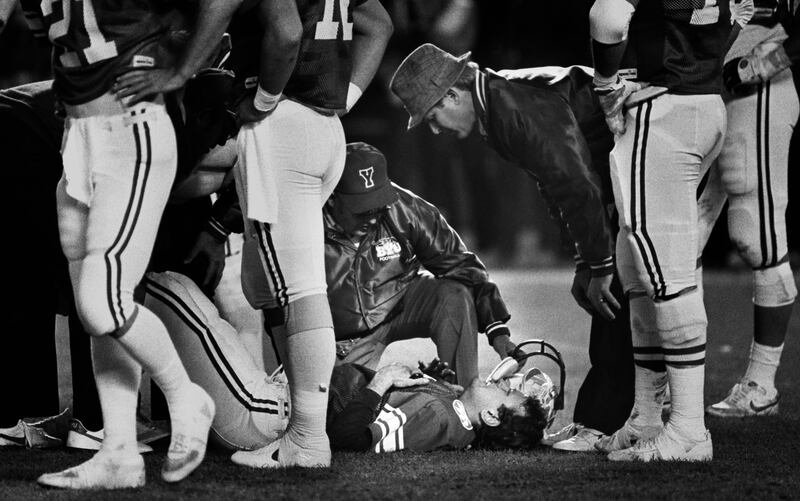
“Uh, no,” Holmgren stated while shaking his head in disbelief.
“I said, ‘Yes! I’m going in!’” Bosco recalled saying. “So, I ran in and said, ‘Blaine, let’s go. Sorry.’”
Fowler left the game just as he had in the 1982 Holiday Bowl when an injured Steve Young surprised the team by putting himself back in — also against Holmgren’s wishes.
Bosco huddled up his teammates and took a look around.
“I could just feel it,” he said. “I could feel the look in all of their eyes that ‘Here we go! Let’s go!’ That was a feeling I had never experienced.”
The Cougars, handcuffed by five turnovers, and with Bosco’s left leg draped in tape from his foot to his thigh, rallied from a 17-10 fourth-quarter deficit to beat Michigan 24-17 on Kelly Smith’s touchdown catch with 1:23 to play.
“The feeling was if we don’t win this game, we are going to be just like a dozen other BYU football teams and we aren’t going to stand out,” Bosco said. “In our minds as players, we had to win this game. It meant that much to us.”
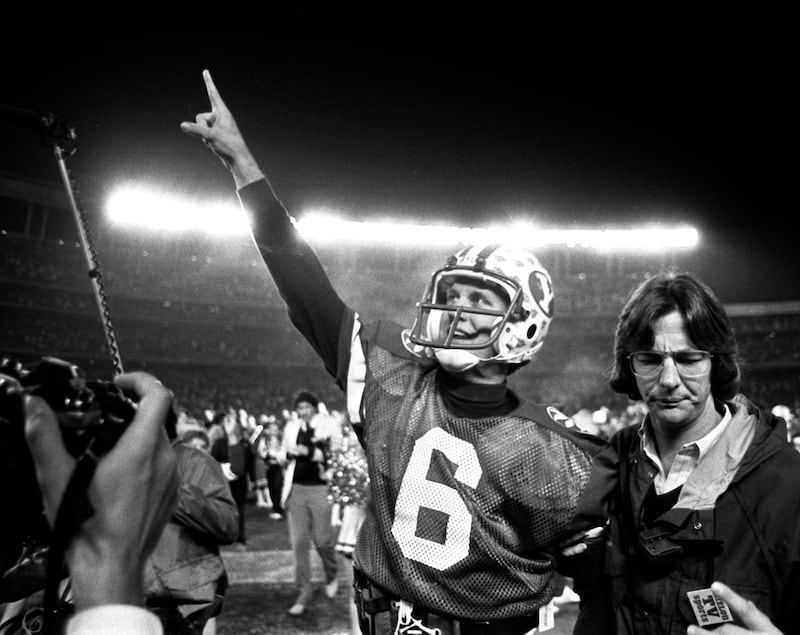
Shoulder trouble
BYU marched into the 1985 season believing it had a better squad than 1984, but in the fourth game at Temple, Bosco’s career took another painful turn. This time, it was his right throwing shoulder and when it was driven into the hard surface at Veterans Stadium in Philadelphia, something changed.
“They (medical staff) told me it was tendinitis in my shoulder and I’m thinking, ‘I can play with tendinitis,’” Bosco said. “The problem was, after every two games, I’d have to go to the hospital and get cortisone shots.”
The diagnosis proved to be false, and Bosco kept playing when he should have been resting.
“I’d miss a lot of practice during the week and then I’d go out to the games and start warming up and I couldn’t do it. I couldn’t throw the football,” he said. “I’d go in and get treatment and come out for the game. Adrenaline would pump up and I felt like I could play.”
Even with Bosco reeling, the Cougars finished the regular season 11-2 and ranked No. 9 before losing to No. 17 Ohio State 10-7 in the Citrus Bowl.
In two years, Bosco and the Cougars went 24-3, but his biggest loss during that impressive run had yet to be revealed.
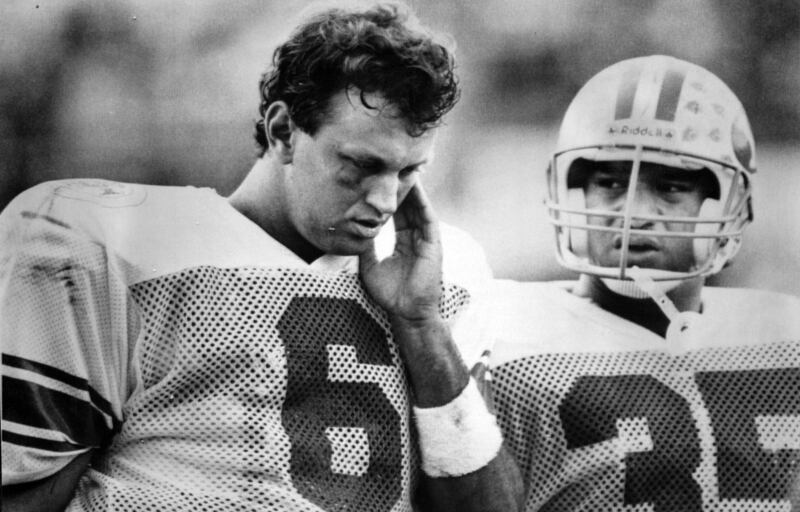
Surprising discovery
The true degree of Bosco’s injury didn’t surface until after Green Bay selected him in the third round of the 1985 NFL draft. The Packers sent him to a specialist in Los Angeles where orthopedic surgeon Frank Jobe made a surprising observation and operated the following day to repair it.
“So, for 11 games (following the injury at Temple) my shoulder was coming out of socket every time I threw the ball. That’s what I was going through,” Bosco said. “I didn’t know it. Nobody knew it.”
Unfortunately for Bosco, hindsight that always reveals the better path hadn’t happened yet.
“It probably would have been better for my career to sit out and get the surgery right then (after the Temple game) and get ready for the draft,” Bosco said. Such wise reflection, however, would have received some stiff inner resistance at the time. When in the moment, players want to play.
In today’s game, Bosco would have likely left BYU for the draft after 1984, but NFL rules prohibited teams from selecting underclassmen — a rule that changed two years later.
“Robbie had enough in the books to be a high draft pick if he’s 100% healthy,” said Fowler. “If he gets surgery and is healthy and throwing it like he can, he plays 10-15 years in the NFL.”
It was too late. Even after surgery, Bosco’s shoulder never fully repaired, and he retired from football after his second season in Green Bay and started to coach. Today, Bosco works at BYU as director of the Varsity Club. He lives regret-free and holds no grudges for a costly misdiagnosis 37 years ago.
“I thought Robbie was so great in college. I loved watching him play,” said Marc Wilson, BYU’s first consensus All-American, 1979 Sammy Baugh Trophy winner, and two-time Super Bowl champion. “I thought it was so unfortunate what happened to his pro career. He hurt his shoulder and, just like Gary Sheide, he never really was the same and it cost him his pro career.”
Sheide, another Sammy Baugh Trophy winner in 1974, injured his shoulder during the Fiesta Bowl against Oklahoma State, which cut his NFL career short.
“I think that Robbie would have excelled in the NFL if his shoulder hadn’t been injured,” Sheide said. “He was as good as any of those highly touted BYU quarterbacks that played after me.”
A knock at the window
While Bosco was turning heads as the top quarterback in Northern California at Roseville High in 1979 and 1980, he was watching Wilson and Jim McMahon light up the scoreboard.
“Wilson was one of the reasons why BYU was so good, and I wanted to be a part of that,” Bosco said. “During my senior year, McMahon is throwing for 500 yards and four to five touchdowns a game and setting 80 NCAA records and I’m like, ‘I’ve got to get there! I’ve got to get there!’”
There was just one problem. Sean Salisbury was the top-rated quarterback in Southern California who also had an offer from BYU.
“He was a member of the church and I wasn’t, so my thought was, if he goes to BYU I’m going to Cal,” Bosco said. Former BYU offensive coordinator Doug Scovil was also recruiting him to San Diego State.
Tom Ramage was BYU’s defensive line coach, but Northern California was his recruiting territory. He set up camp in Bosco’s hometown and didn’t leave for a week while he waited a decision.
“I kept telling him, ‘I’m not going to decide until I find out about (Sean) Salisbury.’ I’m in middle of math class at school and all of a sudden, there is a knock at the window.” — Robbie Bosco recalling his recruitment to BYU
“I kept telling him, ‘I’m not going to decide until I find out about Salisbury,’” Bosco said. “I’m in middle of math class at school and all of a sudden, there is a knock at the window.”
Bosco, his math teacher Mr. Pellegrino and the entire class turned to look and there is Ramage waving to get his attention. With permission from his teacher, Bosco left the room.
“He told me Salisbury is going to USC and I said, ‘OK, I’m going to BYU,’” Bosco said. He went into the P.E. office to call his dad and signed the letter-of-intent that afternoon.
It’s safe to assume that Ramage had no idea Bosco would throw for 8,400 yards and 66 touchdowns at BYU, or that he would win the Sammy Baugh Trophy as the nation’s best quarterback and finish third in the Heisman Trophy race, or that he would win the program’s first and only national championship.
What Ramage did know, as he tapped on the glass at Roseville High, was a window of opportunity had just opened, both for Bosco and BYU, and he wasn’t about to wait another minute to close the deal.
Dave McCann is a contributor to the Deseret News and is the studio host of “After Further Review,” “Countdown to Kickoff,” “The PostGame Show,” and play-by-play announcer for BYUtv. He is also co-host of “Y’s Guys” at ysguys.com.
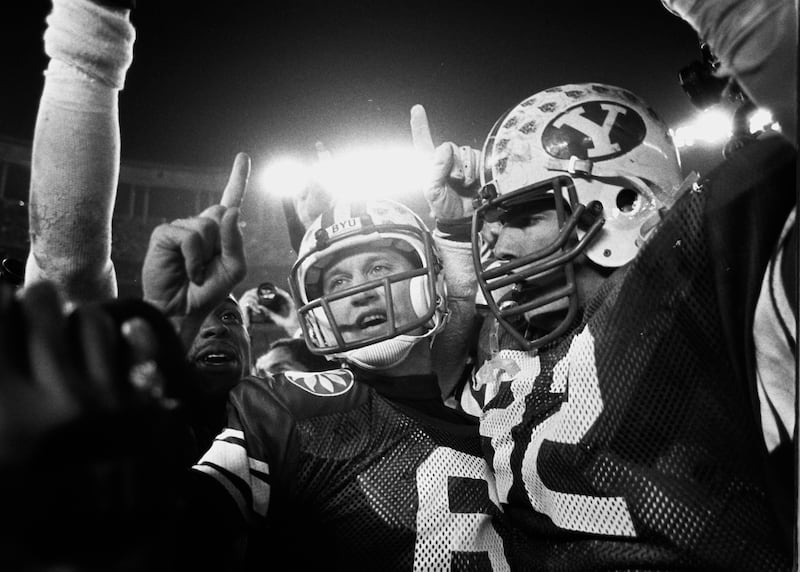

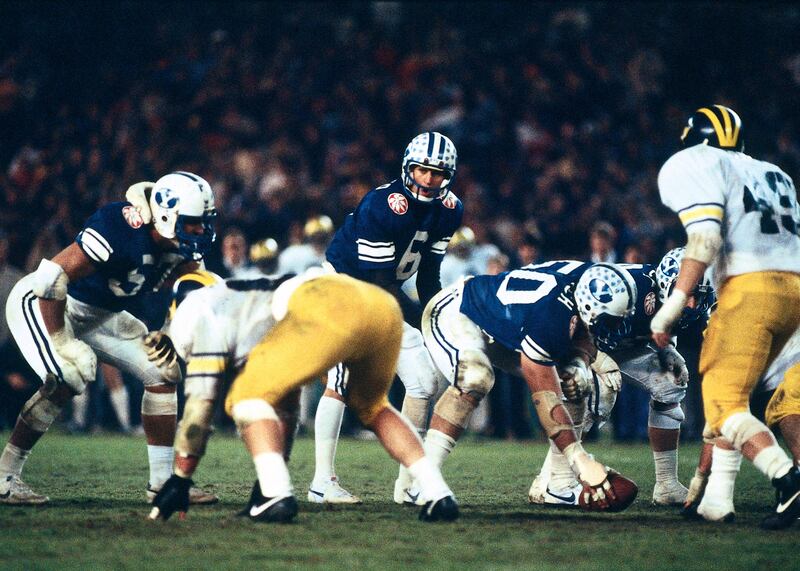
 alt=Dave McCann
alt=Dave McCann